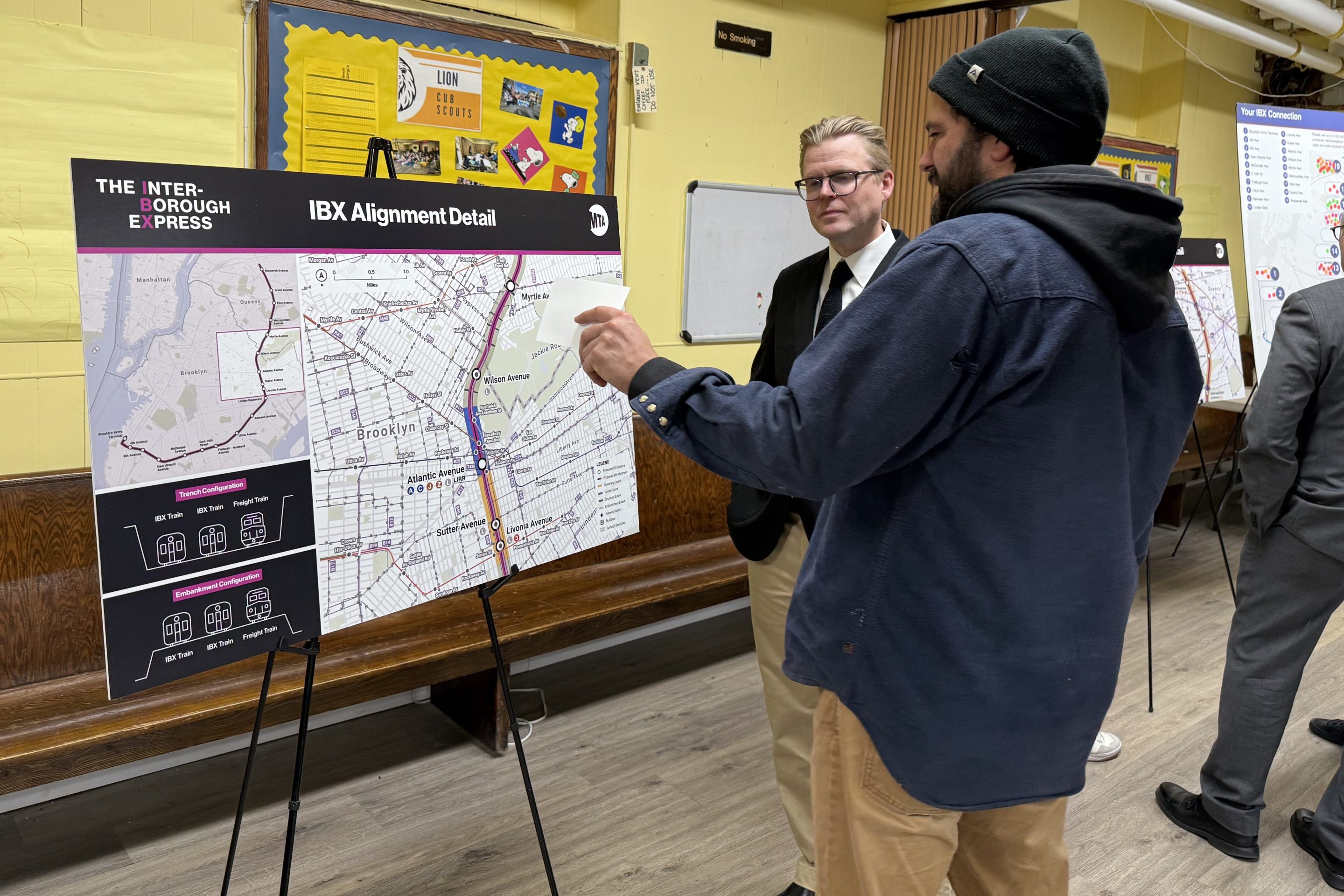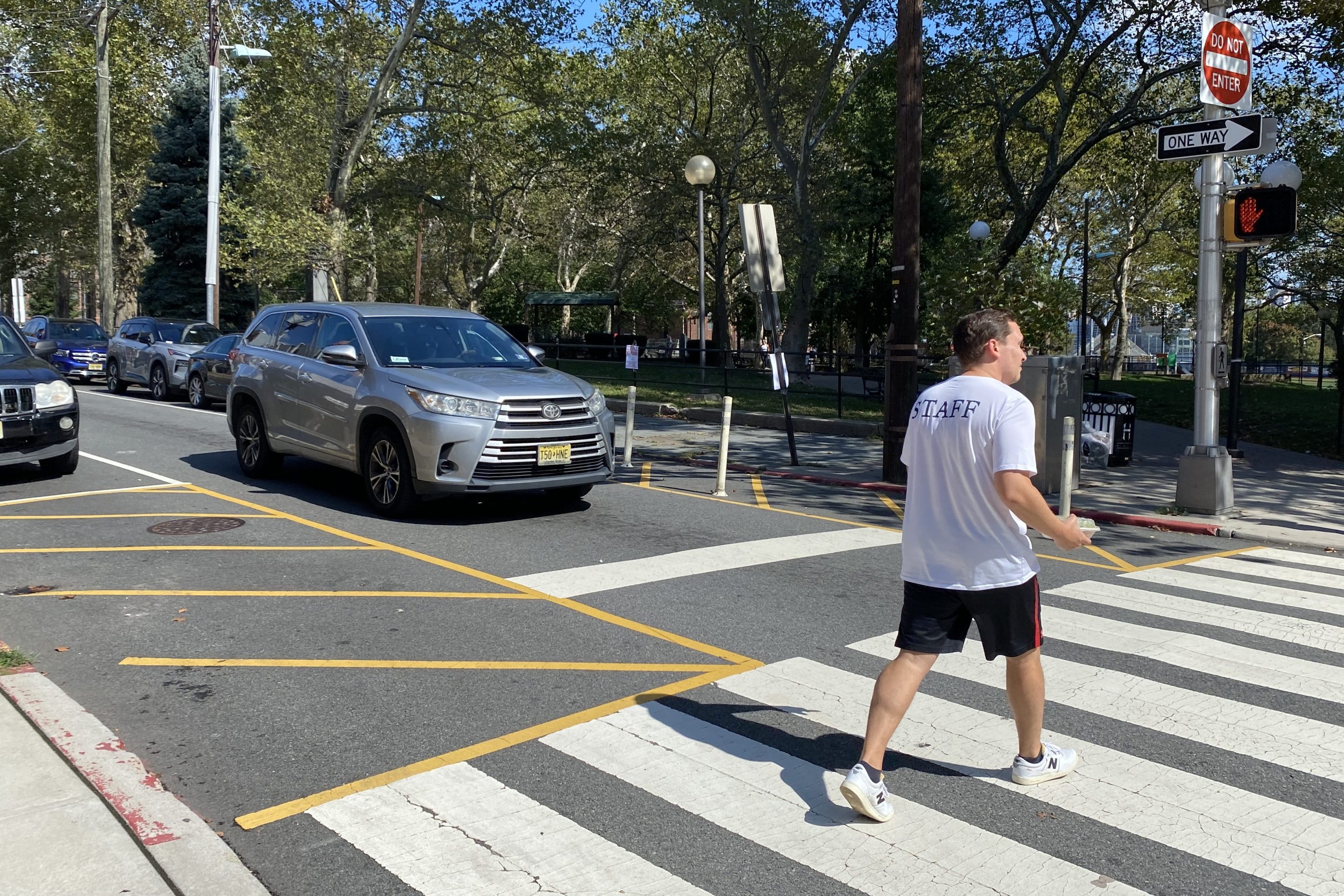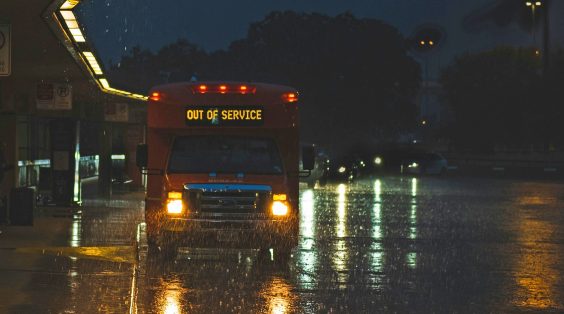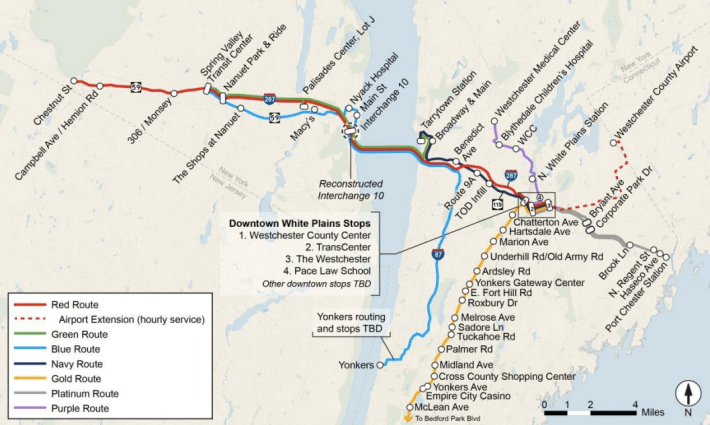
On Friday, the Tappan Zee Mass Transit Task Force released its final report [PDF], recommending bus improvements across Westchester and Rockland counties that could be completed when the new Hudson River span opens in 2018. But the path to implementation is vague at best. If these bus upgrades are going to materialize, task force members say it's up to the governor to push for them.
The transit task force, created by Governor Cuomo in exchange for the backing of his bridge replacement plan by county executives more than 18 months ago, represents the first regional transit planning for the area since the governor ended previous Tappan Zee replacement studies three years ago.
Calling transit one of the “obstacles to building a replacement for the TZB,” the report says, "Governor Cuomo decided to put the development of transit proposals on a separate track from the bridge replacement project."
The plan released Friday calls for a watered-down version of Bus Rapid Transit, with the potential for future bus or rail expansions after 2018. It is short on details about cost, funding, and implementation.
The bus system would use 50 buses on seven routes. Every route would have buses arrive every 10-15 minutes during peak hours and every 20-30 minutes at other times. The routes are focused on the I-287 corridor and downtown White Plains, with a few spurs to nearby destinations, plus Yonkers and the Bronx. The new system is expected to attract 10,150 new riders daily and speed bus trips by 25 percent on local roads and 20 percent on I-287.
Capital improvements to increase bus speed focus mostly on queue-jump lanes, which allow buses to get a head-start on traffic at red lights at selected intersections, and transit signal priority, which can hold green lights for buses.
There are also some recommendations that yield indirect benefits to bus riders, such as smart traffic signals on Route 59 in Rockland, which respond to real-time traffic volumes, and ramp meters for traffic entering I-287, which regulate traffic flow and could allow buses to skip to the front of the line.
The plan also includes dedicated bus lanes on the Tappan Zee, in parts of downtown White Plains, and along sections of Central Avenue. A study of Central Avenue bus service endorsed BRT upgrades in 2009, including bus lanes; Westchester County is already in the process of implementing many of those recommendations. In 2012, the state committed to opening the new Tappan Zee's extra-wide shoulders to buses.
Rockland County planners have advocated running buses on the shoulder of I-287 west of the bridge and adding a new bus ramp or connection from the Tappan Zee to Tarrytown, but the report does not include those requests. Instead, it calls for a study of transit lanes on the I-287 corridor but does not propose dedicating existing highway lanes to buses.
The task force report calls its proposal Bus Rapid Transit, but with bus lanes missing along the vast majority of the route, at least one advocate remains unconvinced. "A dedicated bus lane is a critical, defining characteristic of a Bus Rapid Transit system," said Tri-State Transportation Campaign executive director Veronica Vanterpool, who held out hope for more bus lanes after 2018. "We don’t see this as a Bus Rapid Transit system in the short term."
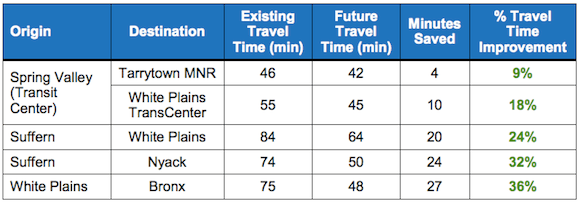
The report laid out options for who could operate the bus system, including a new authority or existing transit operators like Transport of Rockland, Bee-Line Bus, or the MTA, without settling on a recommendation. Questions about funding, designing and building the suggested transit improvements also remain up in the air. "We never came to a consensus," Scott Baird, president of the Nyack Chamber of Commerce and a task force member, said in an e-mail. "The report now goes to the Thruway Authority and governor’s office for follow-through. It's really up to them."
Streetsblog has reached out to the Thruway Authority's New NY Bridge project and the governor's office about the role each will play in implementing transit improvements but has not received a reply.
The task force report does not contain any cost estimates. In the past, the state has said that BRT could cost as much as $5 billion, and DOT Commissioner Joan McDonald has said that Tappan Zee BRT could cost up to $20 billion. (For comparison, the entire bridge replacement project is estimated to cost between $3.9 and $4.8 billion.)
Although it has secured a low-interest federal TIFIA loan for the Tappan Zee, there are still questions about how the project will be paid for and what the new bridge's toll structure will look like. Thruway Authority Executive Director Thomas Madison said last November that members of a toll and financing task force would be named before the end of 2013, but Vanterpool said most observers now accept that the toll task force is on ice until after the gubernatorial election in November, more than two years after it was announced.
Vanterpool said the toll and financing task force should include transit in its discussions. "The two issues cannot be divorced from one another," she said. In the meantime, Tri-State is looking for the governor to move on the transit panel's recommendations.
"We don’t want to wait eight months," she said.
